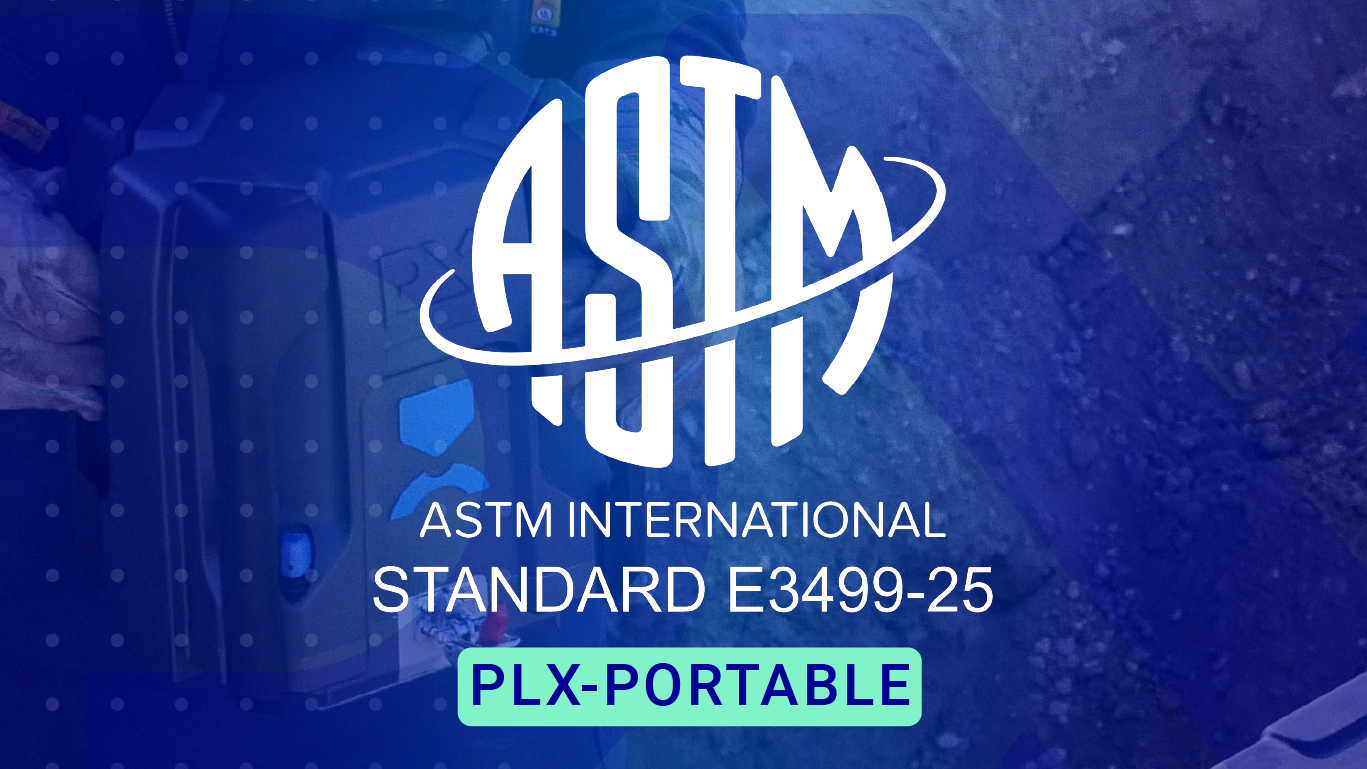A major milestone for field testing has been reached: the PLX-Portable from Plastometrex is now the only method for obtaining stress-strain curves directly from in-situ assets to be recognised by an international standard. Having pioneered the technique, Plastometrex led the development of ASTM Standard E3499-25 for Profilometry-based Indentation Plastometry (PIP), the physics-based method that powers all Plastometrex products, including the PLX-Portable.
For the first time, engineers working in a variety of areas, including pipeline integrity assessments and MAOP (Maximum Allowable Operating Pressure) recalculations, in-situ testing of I-beams and structural members, and ongoing asset integrity monitoring for ageing infrastructure, can access auditable and standardized yield stress and tensile strength data directly from in-service components, without the need to cut samples or interrupt operations. With the publication of the new ASTM standard, the PLX-Portable now gives engineers a trusted, globally consistent route to accurate mechanical property data, ensuring that field decisions can be made with the same confidence as laboratory tests.
Historically, asset owners have relied on testing methods that have remained unchanged for over a century: Hardness testing, which provides only indirect correlations to mechanical strength, and destructive lab-based tensile tests, that cause costly downtime. In recent times, some non-destructive systems have entered the market, but all lack standardization. This absence of a recognized framework for non-destructive mechanical testing methods has caused significant inefficiencies and limited data comparability, confidence, and defensibility when presenting evidence to regulators or during audits.
“From the outset, our goal was to create a test that delivers the speed and simplicity of hardness testing while providing the same fundamental mechanical properties and confidence as tensile testing,” said Dr Jimmy Campbell, CTO of Plastometrex, who led the technical development and standardization of the method. “The publication of the new ASTM standard validates that vision. It brings the same level of trust, traceability, and comparability that regulated industries rely on in the lab, directly into the field.”
Currently used across energy infrastructure and defense projects in North America, Europe, Asia, and the Middle East, the compact PLX-Portable extracts stress-strain curves from an indent using a physics-based inverse finite-element model. The technique delivers yield and tensile properties in minutes, at a fraction of the cost and complexity of destructive tensile testing, while providing directly comparable results.
Unlike other non-destructive methods, the PLX-Portable offers a unique combination of efficiency, accuracy, and reliability, validated through industry round-robin studies, proven performance in challenging environments such as on live vibrating assets, and now underscored by recognition in ASTM E3499-25.
This combination of scientific rigour, speed, and portability is redefining how engineers verify material performance in the field. “Aerospace and energy have long relied on recognised testing standards to ensure traceable, comparable results,” added Dr Campbell. “Pipeline integrity, construction, and asset management can now do the same, supported by a standard that makes non-destructive mechanical testing both credible and practical.”
By merging the speed and economy of hardness testing with the insight and accuracy of tensile testing, backed by an ASTM standard, the PLX-Portable defines a new benchmark for how mechanical data is generated, verified, and trusted in the field.
Click HERE to find out more about the standardized PLX-Portable.


